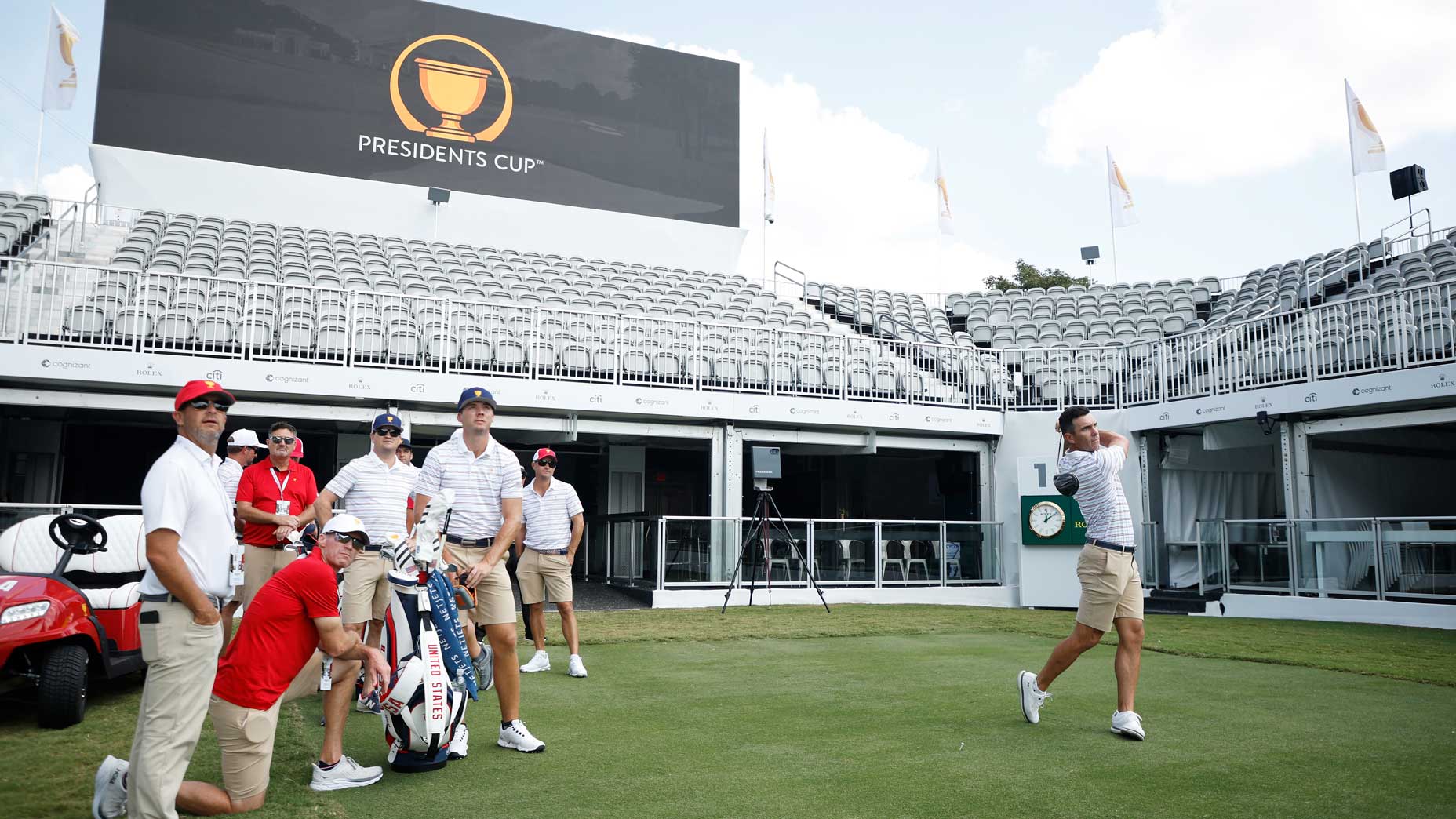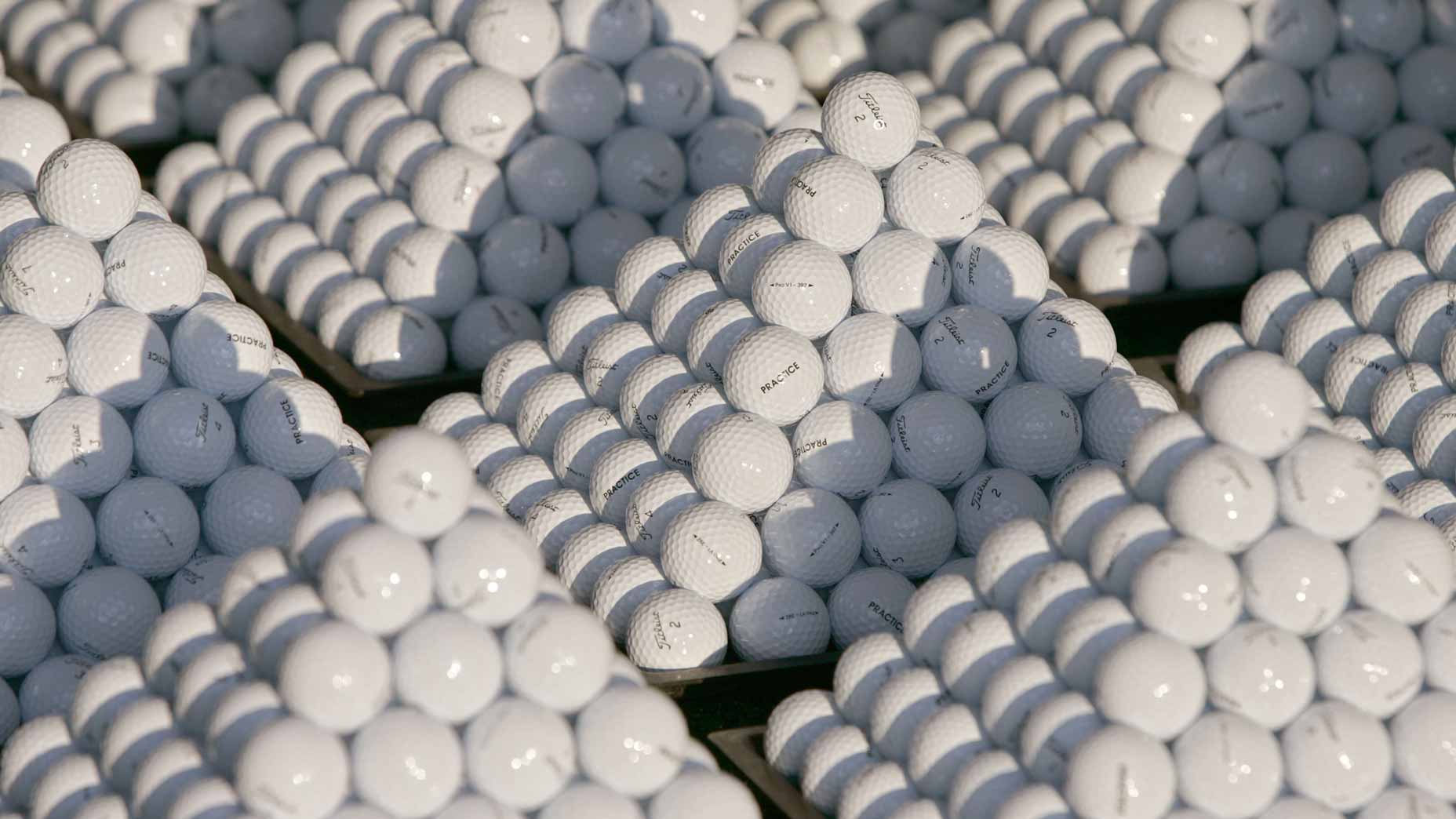
The Presidents Cup is one of the few times we get to see the pros in match play.
Getty Images
It’s just about fall. The leaves are changing, football has started and match-play golf is about to adorn your television once again.
The Presidents Cup is one of just two match-play events the PGA Tour runs all year, the other being the spring’s WGC-Dell Technologies Match Play Championship — the Ryder Cup is run by the PGA of America and the DP World Tour.
It’s a format we’re not used to seeing too often in the professional or even the collegiate ranks, but it’s usually the format of choice for games at your local golf course, club championships and elite amateur tournaments like the U.S. and U.S. Women’s Amateurs. Many state and regional golf associations run a stroke play “open” and a match play “amateur.”
The Presidents Cup, like the Ryder, Walker, Solheim, Curtis, etc., Cups adds a team element and we’ll breakdown how it will look this year at Quail Hollow Club.
Scoring
There will be 30 matches across the four days of the Presidents Cup. The event started with 32 from 1994 to 2000 and had as many as 34 matches before seemingly finding the butter zone with 30 since 2015.
Each match is worth one point and the first team to get to 15 and 1/2 points wins. This differs from the Ryder Cup which only has 28 matches, thus requiring 14 points to retain the cup and 14 and 1/2 to win.
Instead of going to extra holes, if a match is tied after 18 holes, the result is simply one half point to each team to keep things moving along (they have two sessions of matches on Saturday, more on that in a bit).
What happens if there’s a tie after 30 matches?
This is another point of difference from the Ryder Cup: If both teams are tied after the 30 matches, they tie and the Presidents Cup is shared. In the Ryder Cup, a tie means the team who held the cup before the contest keeps it.
This has changed over the years. At the first Presidents Cups, each team captain would select a player, only to be revealed in the case of a tie, who would play a sudden-death match to figure out the winner.
The first — and only — time this happened was epic. Tiger Woods and Ernie Els were the chosen players to duel, but the tiebreaker ended in a draw after three holes due to darkness. Captains Jack Nicklaus and Gary Player agreed to share the cup resulting in the only tie in Presidents Cup history.
After those matches and until 2013, if no team had reached the winning point total, any singles match on the final day ending in a tie in regulation would go to extra holes until the match and cup were won outright. That rule was never needed and since 2015, the matches can end in a tie in the spirit of Nicklaus and Players’ call.
Match Formats
You’ll see three different match formats this week; Foursomes, Four-ball and Singles. The home team captain choses the order of matches for the first three days and Davis Love III has selected to start with Foursomes on Thursday, followed by Four-ball on Friday.
Foursomes
(Five matches Thursday, four Saturday morning)
Foursomes is the truest team game used at the Presidents Cup. In each match, two players from each team are partners and play an alternate shot format. Each pair choses who will tee off on odd holes and who will tee off on even holes and then alternate from there until the ball is holed. The pair with the lowest score wins the hole.
Four-ball
(Five matches Friday, four Saturday afternoon)
This format is commonly known as “best ball” and is probably most familiar to American golfers from games at their local course. You’ll also see two players from each team in each match, but everyone in the group will play their own ball — hence the name. On each team, only the player with the lower score on the hole will count for the match. This means if Player A makes a 5, but his partner, Player B, makes a 3, Player B’s score counts for the match.
Singles
(12 matches Sunday)
This is simple, one-on-one match play which makes up 40 percent of the points at stake this week. Go out and beat your guy.
Pairing selection
The day before each match, or the morning of in the case of the Saturday afternoon session, the captains will get together to select which players will be facing off in the following matches. This is actually fairly entertaining sometimes as the captains alternate naming a team or player first, giving the other captain a chance to react to the pick.
You’ve probably noticed by now, with only five and four matches in the first four sessions, not all 12 players on each team will play in each session. In fact, a player only has to play in one team match and one singles match. This is a rule which was changed in 2019. Previously, a player had to play in two matches in additional to Sunday singles. This is how you could see a player with a 5-0-0 record for the week and one who only goes 1-0-1.









